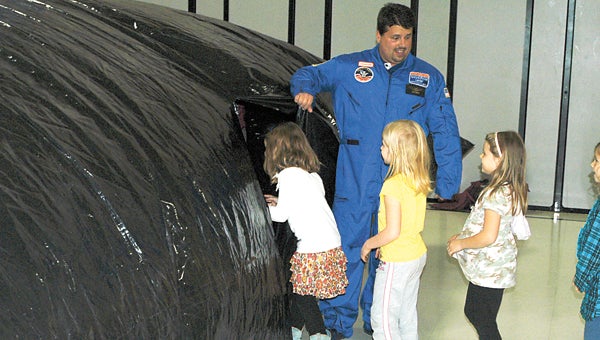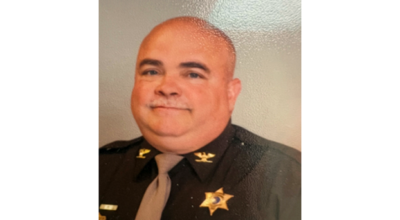A galaxy close, close to home
Published 5:10 pm Thursday, December 6, 2012

Rob Wright helps a group of Edwardsburg students enter a portable planetarium. Leader photo/JOHN EBY
EDWARDSBURG — Here’s how a guy with his head in the clouds and stars in his eyes brings it down to earth in time for teaching.
He hooks a fan to a 25-by-50-foot piece of plastic and inflates it until it looks like a cross between a really big, black bean bag or a squishy flying saucer.
For $100, Rob Wright created a portable planetarium Wednesday afternoon, filling the Edwardsburg Primary School gymnasium.
One available online costs $4,000, which includes a projector.
“I can get four years out of it,” he said. Next year, he’ll flip it like a mattress.
It’s one thing the Edwardsburg science teacher learned last June at the U.S. Space and Rocket Center in Huntsville, Ala.
Wright, the LaGrange Township supervisor who has taught 13 years for Edwardsburg, is wearing his blue flight suit.
Going to space camp is an itch he wanted to scratch since growing up in Cassopolis.
Up close, the trash bag-like surface is pocked with precisely positioned pinholes. Constellations which twinkle like the night sky inside rely on those punctures of natural light seeping in to create the effect.
His “star lab” contraption reminds Wright of Jiffy Pop. With excited first-graders bouncing around inside, debating whether the Big Dipper or Orion the Hunter ranks as their favorite constellation, it bobs a bit, like popcorn kernels verging on exploding.
Though he normally teaches eighth grade at the middle school, he’s been working with elementary students, too, including his son, Brady, a first-grader.
His star-dome is “big enough for an entire class to fit in without having to go to a planetarium.”
The top sags a bit when the crease of a door flaps open, but quickly refills to a height comfortable for adults, too, yet “folds up to fit in the back of my car.”
The Honeywell Educators @ Space Academy program is designed to help teachers move beyond standard math and science curriculum with supplemental teaching techniques developed through real-life astronaut training.
Wright was among approximately 200 teachers participating with the Class of 2012, joining a network of more than 1,650 graduates from 45 countries and all 50 states.
Honeywell Educators participate in 45 hours of professional development, as well as an intensive educator curriculum focused on space science and exploration. Activities include classroom, laboratory and field training exercises linked to U.S. science and math teaching standards.
Each teacher also undergoes real-life astronaut training, including a high-performance jet simulation, scenario-based space missions, land and water survival training and state-of-the-art flight dynamics programs.
Each Honeywell Educator receives a full scholarship including tuition for the six-day program, round-trip airfare, meals, accommodations and program materials, all underwritten by Honeywell and its employees.
Wright, a 1991 Ross Beatty High School graduate, also graduated from Southwestern Michigan College.
He and his wife, Tonya, who teaches sixth-grade math at Edwardsburg Middle School, both attended Central Michigan University. He added his master’s degree from Grand Valley State University.






